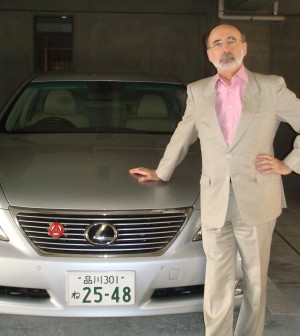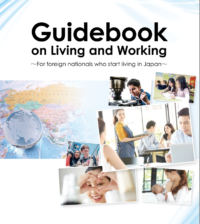- Belgium comes to Yamashita Park
- Residential Villa in Phuket Entices Remote Workers With Long-Stay Rates
- Rare pieces of French glass art at the Mirai Museum of Art
- Feast on fresh fish and seafood at the 2024 ‘Sakana’ Festival
- Would you like to ride in a Louis Vuitton gondola lift?
- Naked Snow Aquarium
- Festive lights at Yomiuriland will get you feeling the holiday vibes
Tokyo roads: How good a driver are you?

You know the situation: you’re in the outer lane of the Expressway, going about 110 Km per hour, moving along with a fair bit of traffic. A foreign car with blacked out windows comes charging up behind you. If you don’t soon move over he will swerve to the middle lane, accelerate past on the nearside, then cut in front of you signalling right as he does so. What do you do?
Speed up to close the gap to prevent him getting ahead?
Blast the horn in retribution as he nearly clips your nearside?
Sit on his tail and flash your lights?
Pull back to allow this fast and dangerous driver room to do his illegal nearside undertaking?
That’s right. The advanced driver’s action is No. 4.
It is a sound principle, if you want to acquire skill in road craft, never to get involved with other people’s bad driving. Always keep as much of a zone of safety around you as road and traffic conditions allow.
Here is another. Try to drive in such a way that you mostly avoid touching the brakes unless you need to bring the car to a halt. This requires long range observation and planning, with the ability to match your speed to road and traffic conditions, so you blend in with the traffic while making safe progress at the same time. For example, if you see the traffic lights ahead are red, back off the accelerator and use engine braking to slow down. The lights may have changed by the time you arrive at the stop-line, thus avoiding altogether the need to brake. This makes for smoother ride, saves wear on tyres and brakes and uses less fuel.
The aim should be to drive smoothly and unobtrusively at all times, so that your passengers as well as other road users and pedestrians are not in any way inconvenienced or alarmed. When you need to come to a halt, try to do so without the slightest jerk. Not as easy as it sounds. You can do this, with practice, by spreading out the braking and then gently easing off the pressure on the brake pedal just before the car comes to a stop. Imagine you are the chauffeur for the Managing Director: you should not ‘cause him to look up from his Financial Times.’
The advanced way to slow down, when you do need to brake such as for a bend or other hazard, or indeed if you need to stop, is to apply the brakes for one period of braking only. If you are in a manual car you brake to the appropriate speed, then select the correct gear for the speed. In Japan, where the vast majority of cars have automatic transmission, gear selection is done for you, and you just need to brake (if at all) to achieve the correct speed for the road and traffic conditions. Contrary to what is taught in Japanese driving schools, ‘cadence’ braking, by the repeated application and release of the brakes, is unnecessary and merely gives your passengers a jerky drive and a pain in the neck; it should be avoided by the advanced driver.
Hold the steering wheel at the ‘quarter-to-three’ position with your thumbs in line with the wheel. When you wish to turn, say to the left, move the left hand up towards or to the 12 o’clock position (depending on the radius of the bend) and pull downwards while passing the wheel through the other hand. If the wheel needs to be turned further, push it up with your right hand while sliding it through the left hand. Except when manoeuvring at low speeds, avoid crossing your hands beyond the 12 o’clock and 6 o’clock positions. To learn this properly requires the technique to be demonstrated and thereafter practised. It gives one better control in an emergency and avoids the danger of injury to your arms if the air-bag should inflate. Of course, do not rest your elbow on the door sill! Never use a hand held mobile phone while driving: the result could be fatal. Even a hands-free phone is a distraction, and better avoided.
A common situation on Tokyo roads is where a vehicle is parked on the left and there is a cyclist ahead. You can anticipate the cyclist will need to pull out, so hang back and give him room. Then, when the cyclist has moved in again to the left, you can pass confidently with complete safety. If you rush ahead the cyclist is squeezed and you may be too close to oncoming traffic near the centre of the road.
Another elementary and essential rule: don’t drive faster than your ability to stop within the distance you can see to be clear. This is frequently ignored in Japan with many drivers travelling too close to the vehicle in front, or going too fast in conditions of reduced visibility. Observe the car in front of you. How often do the brake lights come on? Unnecessary braking is a common fault; it can be avoided by keeping the correct distance from the vehicle in front, and slowing down by easing off the accelerator as the traffic ahead slows.
If you’re being tailgated – a common occurrence – there isn’t much one can do about it. Don’t tap the brakes as this could cause an accident. The only thing to do, if you are on a dual carriageway, is to signal and pull over (provided this can be done safely) to let the tailgater pass – and have his accident with someone else.
Signalling. Many drivers in Japan seem to suffer from winkeritis. Each signal should have a purpose – to inform someone who is likely to benefit – of your intention to change lanes or turn a corner. If the road is clear of other vehicles and pedestrians there may be no point in signalling. It is important to think about every action you take when in control of a car.
A good way of gaining skill in observation, interpretation and planning is by ‘commentary driving’. This is a running commentary given succinctly to an imaginary or actual passenger sitting beside you of what you observe and how you plan to react to the ever changing scene around you as you drive. Not as easy as it sounds. Learn from an experienced driver doing this – it can be quite an eye-opener.
Watch those pedestrians, especially on the smaller city streets without a pavement (side-walk). So many people these days use ear-phones, and they may be staring at their iPhones at the same time, so they are effectively blind and deaf – a potentially lethal situation. Slow down and give them a wide berth. People tend not to use the horn much in Japan compared to other countries. But it’s better to make a noise than have an accident! Beware of pedestrians running; in their hurry they may not be aware of your presence. Be alert to children. Is the child’s hand being held by an adult? Bicycles: it is horrifying how often they swerve into the road from a junction or from the pavement without looking round. They assume, correctly, that if you see them you won’t hit them, but what if they give you little time to react? One must anticipate the unexpected. Be especially vigilant for bicycles when emerging from a petrol (gas) station or side road. A ‘proper’ cyclist, with the right clothes and helmet, is usually aware of what’s going on with the traffic. He or she will likely stop for red lights, and when the road is clear may be going at quite a lick – perhaps 40 kph – so don’t be in a hurry to overtake. Watch out for the ‘mamachari’ (wondrous machines!) if unbalanced with asymmetrical shopping bags and even one hand holding an umbrella in the rain. Give them a wide berth!
Thus, by applying concentration and detailed observation, while continually planning ahead, one can make safe progress and enjoy the exercise of a skilled activity.
Acknowledgement. This article is derived from the teachings of John Lyon, founder of the High Performance Course. The techniques of skilled road driving are fully described in his book Advanced Driving, Haynes Publishing (2012).















